GWR ground signals
by Tim Venton
(with some extra pictures courtesy of Dave Skipsey)
Point discs
|
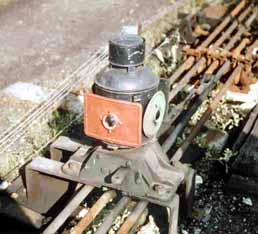 |
Just about as simple as you can get, a point disc, directly connected to the rodding. This would be termed a non-independent disc. Fairly rare by the '50s. These are easy to make work, a rod from underneath. When the point blades move, the lamp casing rotates to show a green face to the driver. However, this does not prove the road. Radstock 1965. |
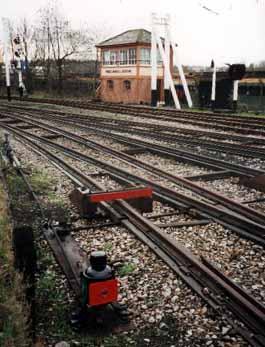 |
A familiar scene at Didcot, with a ground disc in the foreground. The red bar across the rails is a moveable scotch. This would be unusual in later years. |
Early independent discs |
Independent discs are worked by a separate lever in the signal box.
One of the early independent discs, modified in later years with separate detection. The rear view shows the blinder over the hole in the rear of the lamp case. Note the enamelled plate is bolted onto the front of the original signal arm. Taken at Toddington on the narrow-gauge railway, an excellent visit for a signalling enthusiast. |
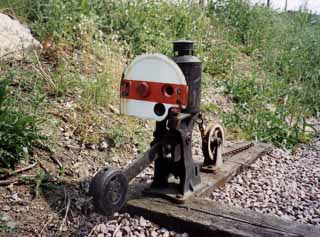
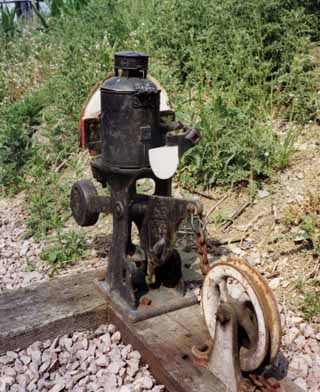 |
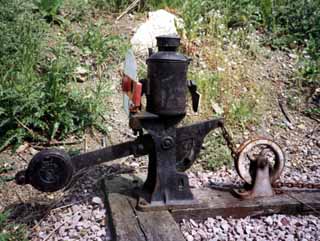
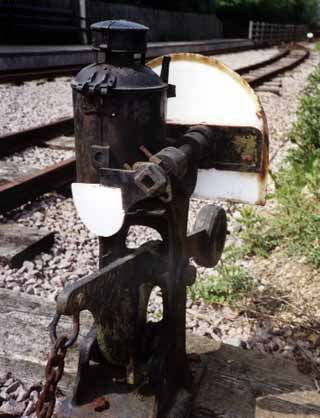 |
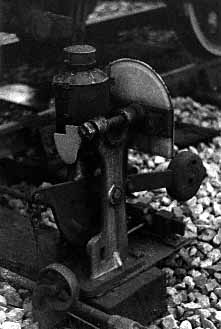 |
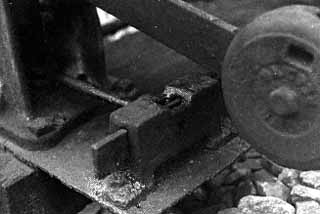 |
The detection, which proves the road, is missing in this example. (Somerset) |
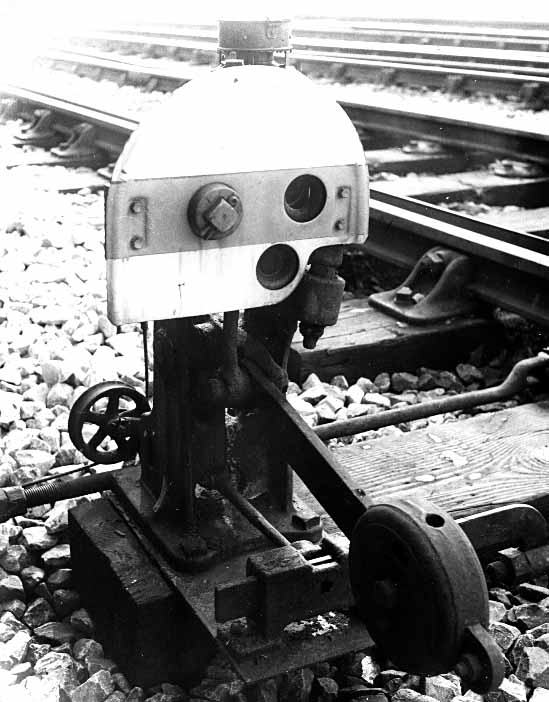 |
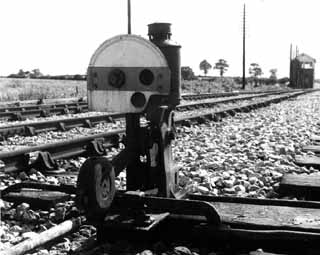 |
Further pictures of the early pattern independent disc, at Witham (Somerset), 24 July 1977. A drawing of this signal is in MRJ No 12.
In early pattern discs, note the axis of rotation is not in the 'middle' of the disc. |
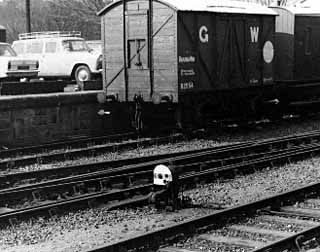 |
Picture of one of the discs at Bewdley, showing a different balance weight, in 1977. |
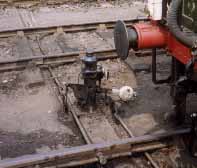 |
Later picture of the other disc at Bewdley. |
Two pictures taken by Dave Skipsey showing the front and rear of a disc at Croes Newydd East c 1978.
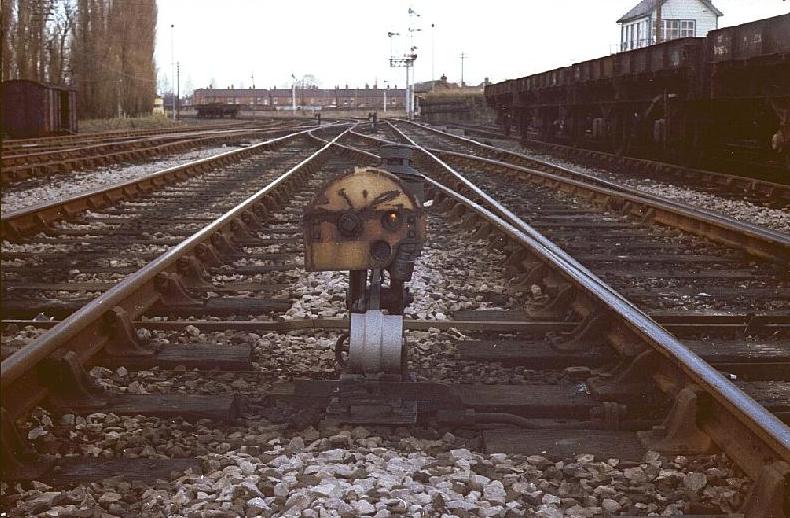
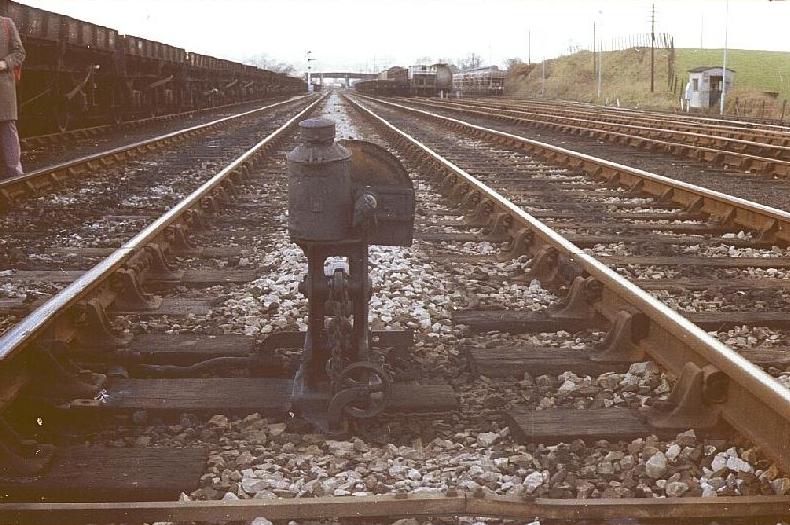
Later standard short ground signal |
The later standard short ground signal has a 12" diameter flat face of enamelled steel, bolted to the cast iron front plate. The axis of rotation is at the centre of the disc. A plunger from the end of the balance weight passes through the flat plate on an extension of the stretcher bar. Thus the point is detected. (In the colour pictures, this crossover is partly dismantled.) The rear view shows the white painted 'back light blinder', which covers the hole through which the lamp shone. Thus the signalman could see that the signal had gone off – back light blinders were usually only fitted where the rear of the signal faced the signalbox. Ashton Gate Junction, 1977.
The black and white picture, taken on 16 April 1975, was when the down relief siding still existed.
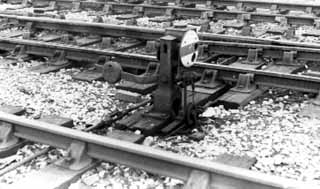
|
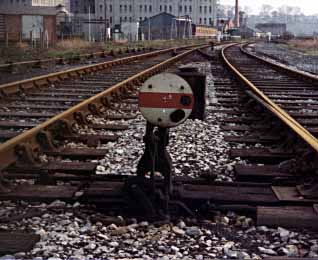

|
| Front and rear of an example at Lightmoor Junction, 1976. The tape measure is set at 2'. These pictures should help to detail/improve the Springside casting. |
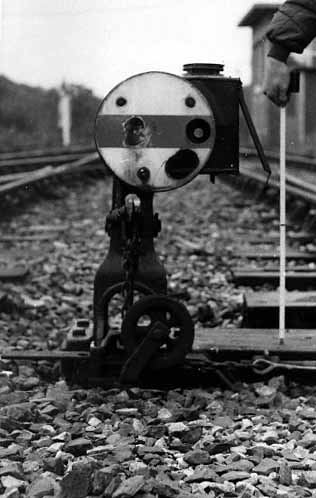 |
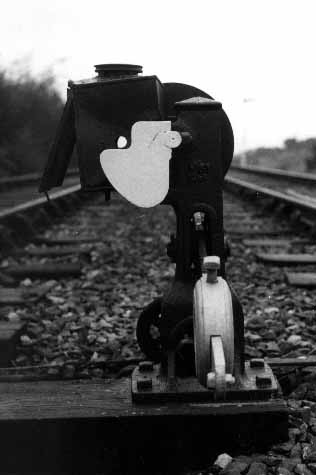 |
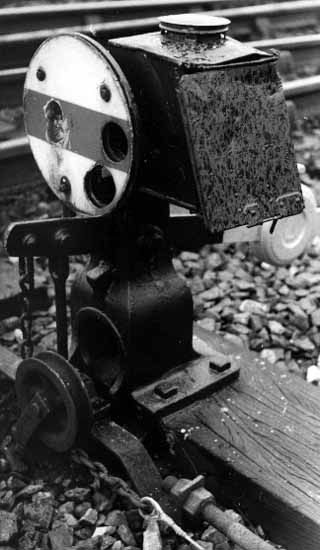 |
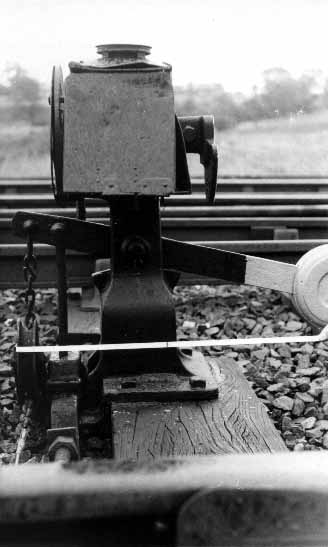 |
Overhead shots of a disc at Hawkeridge Junction 1977
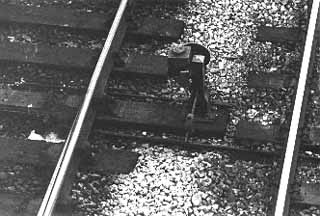 |
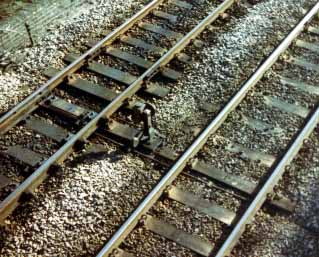 |
The '1918 pattern' tall discs
A larger 16" diameter disc was introduced and used mainly, but not exclusively, on main to siding movements, and it seems that improved visibility was the prime reason for using them, the objective being to make main to siding movements more effective. The 16" size was not however regarded as a replacement for the 12" size, which continued to be the default size for most applications.
A tall pattern ground signal at Tywyn. The signal casting is bolted onto an extended sleeper at the toe of the point. The black and white shots were taken on 12 September 1978.
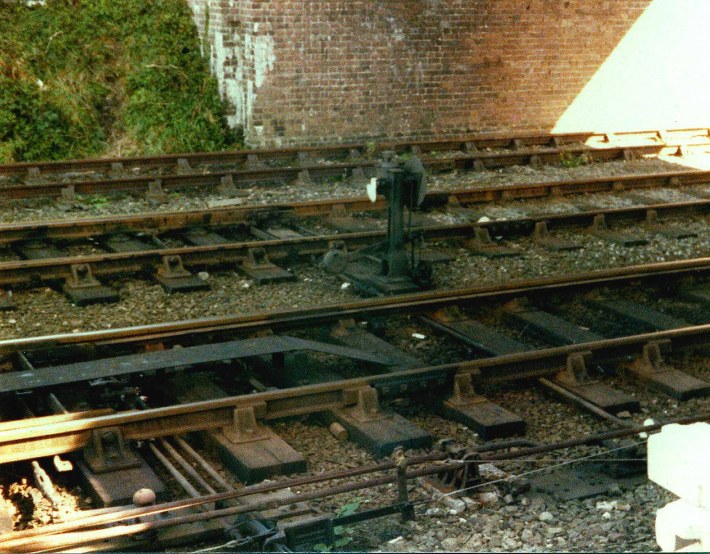
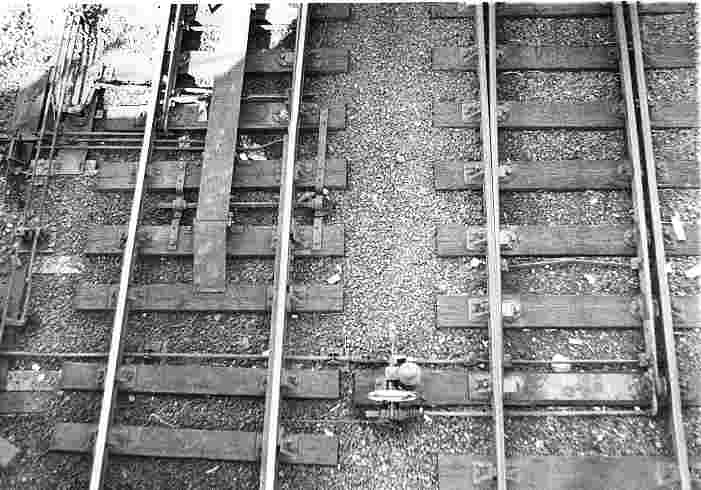
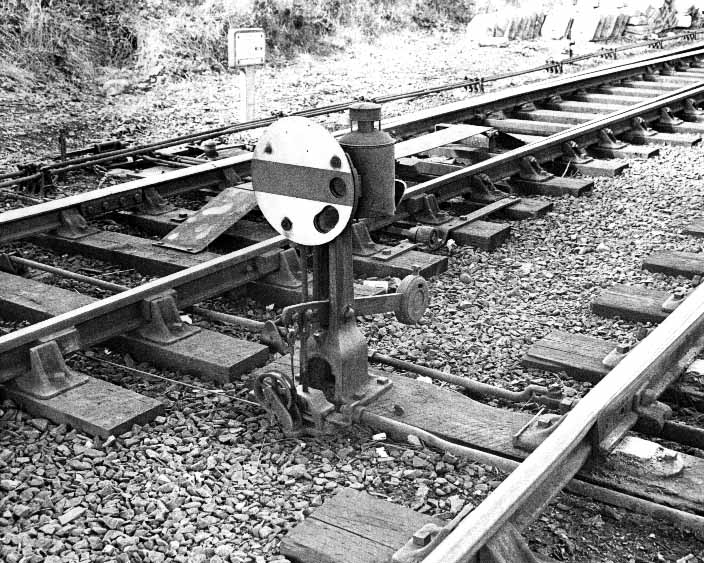
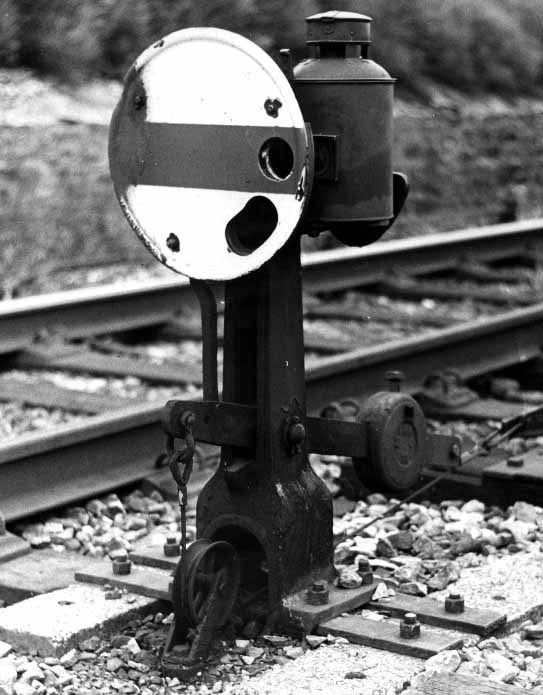 |
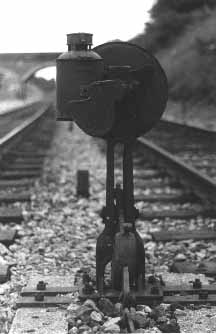 |
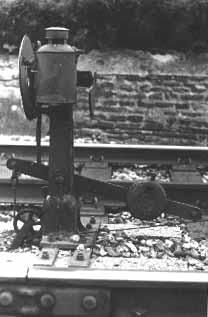 |
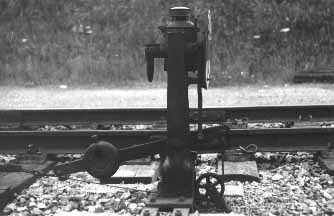 |
Detail shots of another example of a tall disc, unfortunately without detection actually on it. |
| Detail shots of an incomplete signal at Lightmoor Junction in 1976. The GWR ground signal from MSE models can be converted to represent this style of signal, it needs a new 16" diameter face, and the detection box. |
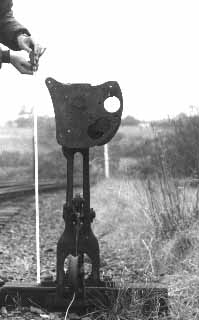
The tape measure is at 3'. |
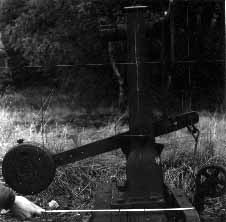
The tape measure here is at 2'. |
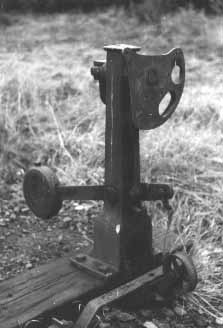 |
A similar ground signal at Dovey Junction, from the front. The 1'4" face plate usually had a curved edge, though rarely they were flat. The lamp casing was round.
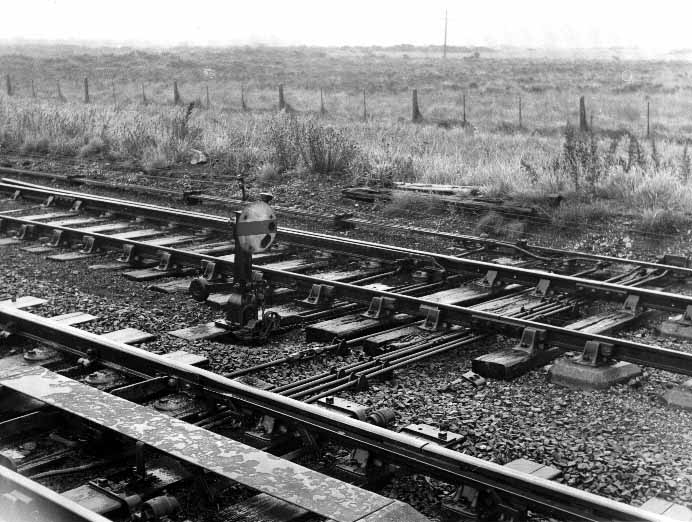 |
|
Double and triple discs |
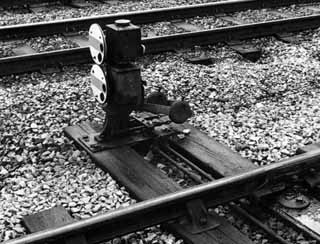 |
As rare as hens' teeth when I was looking, a double disc with the original detection slides. These discs most often had separate detection slides, but this was the only one I ever saw. The lamp casings are square. Dawlish Warren, 1 August 1978.
|
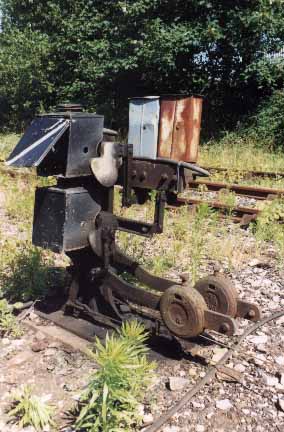 |
Another double disc, in the weeds at Ashton Gate Junction. |
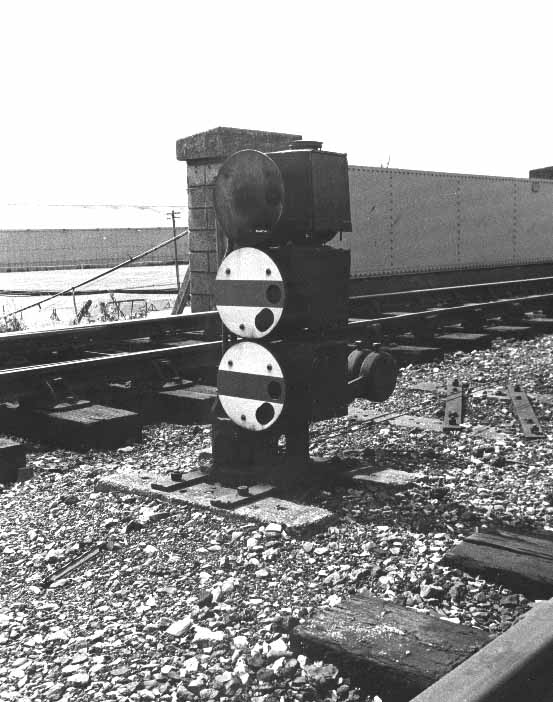 |
A triple disc, not fully in use, at Morris Cowley in 1978. |
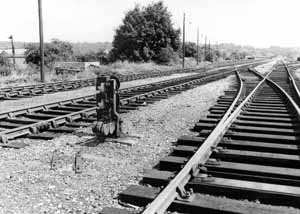 |
Rear view of the same disc at Morris Cowley. |
|





































